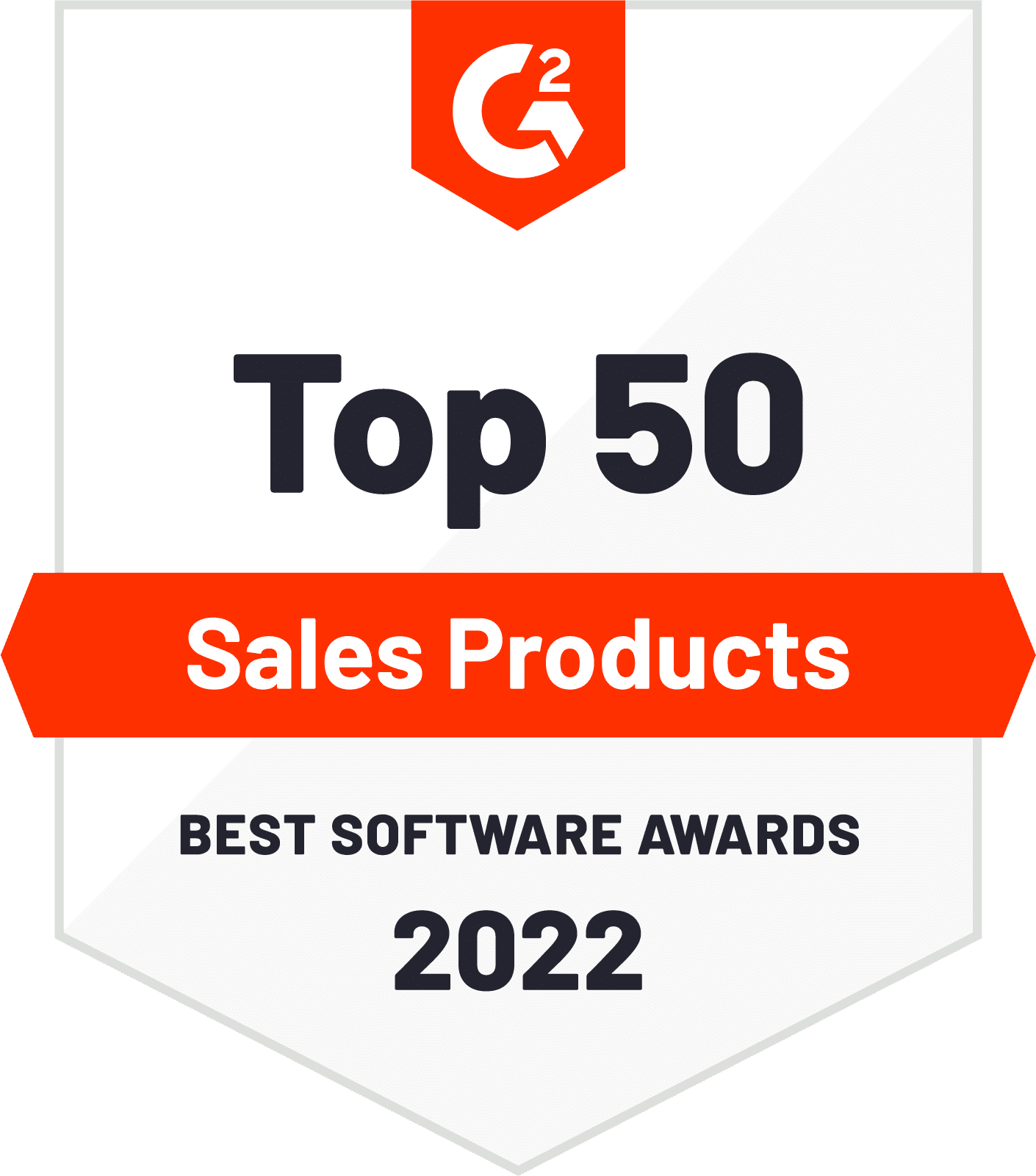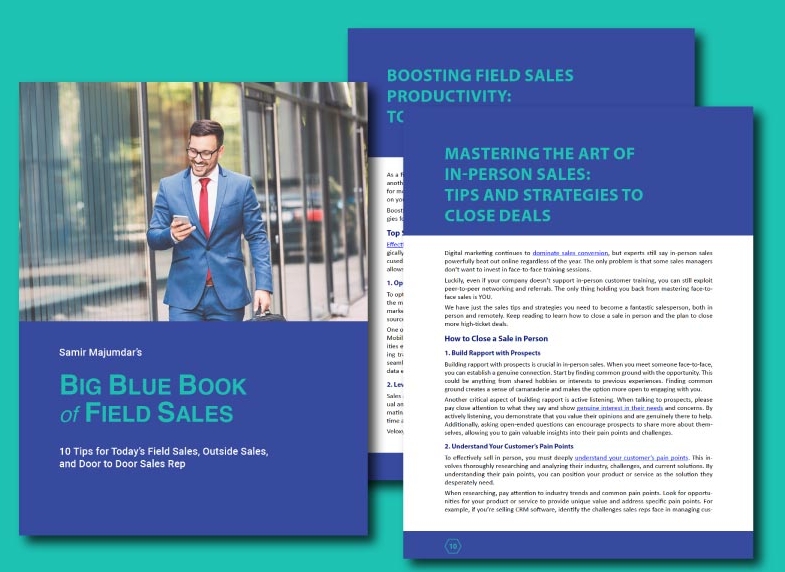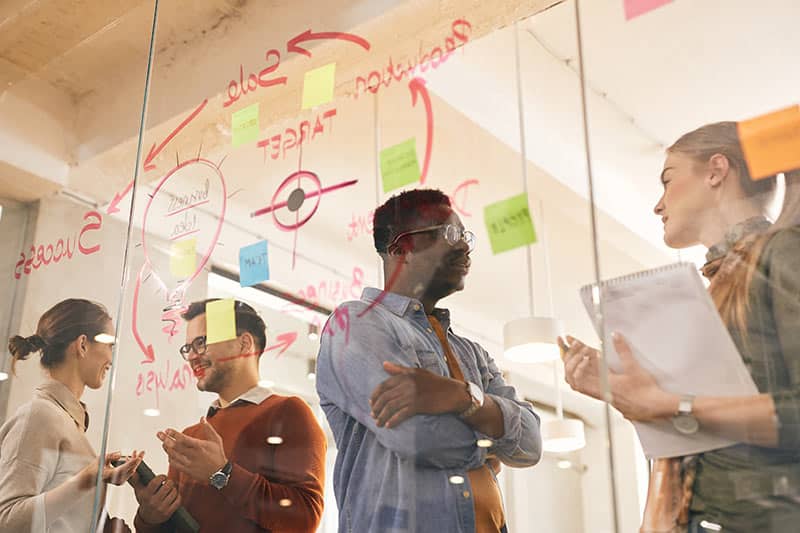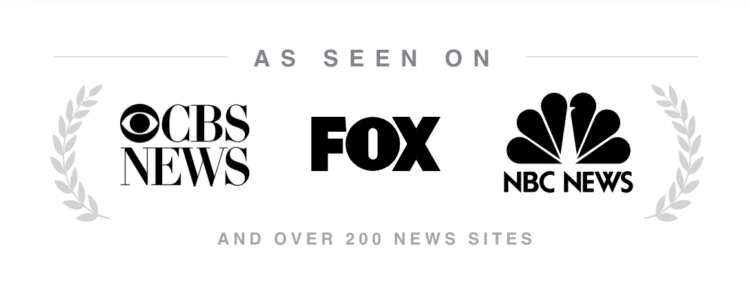
Explore Our 16 Strategies for Improving Salesforce Adoption
Did you know that around 77% of sellers cannot efficiently complete their tasks? Lack of productivity can result in lost sales, poor customer relations, and inability to complete everyday tasks. Many organizations devote a large portion of their budget to tools and programs designed to streamline their operations. However, one of the main hurdles facing CEOs and sales executives is failing to onboard
























In the world of sales, the power of an effective message cannot be underestimated. The right words delivered to the right audience can be the catalyst that turns potential customers into loyal clients.
For instance, the presence of a sound sales enablement strategy has been found to improve sales messaging by 31%!
So how do YOU create a sales messaging strategy that resonates with your target audience and drives results?
In this blog post, you’ll discover the essential elements of a sales messaging framework, learn how to develop impactful sales messages, and explore real-life examples of successful sales messaging strategies in action.
Short Summary
Craft an effective sales messaging strategy for 2024 by understanding target audience, establishing value propositions and aligning sales & marketing efforts.
Implement a customer-centric approach with storytelling, emotional connection and data insights to engage prospects.
Measure performance, adapt to market changes & optimize strategies using training & enablement tools.
Crafting Your Sales Messaging Strategy
The foundation of any successful sales messaging strategy lies in understanding your target audience, establishing clear value propositions, and aligning your sales and marketing efforts.
The more you know about your potential customers and their pain points, the better equipped you will be to create sales messages that resonate and drive results. This is true for inbound or outbound sales, as effective messaging should address the specific needs and concerns of your prospects.
To achieve this, it’s crucial to define your target audience, establish clear value propositions that set your product or service apart from the competition, and align your sales and marketing teams to ensure consistent messaging across all touchpoints. By doing so, you’ll be able to craft a sales messaging strategy that not only engages your prospects but also helps to address their unique business pains and drive more deals.
Define Your Target Audience
Segmenting your audience is a vital first step in crafting a sales messaging strategy that resonates with your target market. By understanding the key pain points and goals of your potential customers, you can tailor your sales messages to address their specific needs and concerns, increasing the likelihood of a successful sales conversation.
To gain insight into your audience’s pain points and quantify business pain, engage in direct customer conversations and leverage the valuable information you gather to inform your sales messaging. This will allow you to create multiple messages that address the unique needs of different target markets, increasing the effectiveness of your overall sales messaging strategy.
Establish Clear Value Propositions
Once you have a clear understanding of your target audience, it’s essential to establish value propositions that showcase the benefits of your product or service and differentiate it from competitors. This can be achieved by highlighting features, emphasizing benefits, showcasing customer stories, and demonstrating your product’s unique qualities that set it apart from competitor offerings.
An effective messaging framework should also illustrate the transformation process that potential customers can undergo with the help of your product or service. By providing tangible, impactful insights that address specific pain points and support the value drivers purchase decisions, you’ll be better equipped to craft compelling sales messages that drive results.
Align Sales and Marketing Efforts
Aligning your sales and marketing teams is crucial for ensuring consistent, effective sales messaging throughout your organization. Both teams should collaborate to create sales enablement content, such as playbooks, cold email sequences, sales cadences, case studies, eBooks, and blogs, that supports the sales process and reinforces your messaging framework.
Additionally, sales leaders and front-line managers play a critical role in reinforcing the concepts of the sales messaging framework within their teams. By fostering collaboration between sales and marketing teams and ensuring a consistent approach to messaging, you can boost sales productivity and drive more deals.
Essential Components of a Sales Messaging Framework
A successful sales messaging framework should incorporate three essential components: a customer-centric approach, storytelling and emotional connection, and data-driven insights. These elements work together to create a comprehensive strategy that engages your target audience, builds trust, and ultimately drives sales.
By combining these components in your sales messaging strategy, you can craft powerful sales messages that resonate with your prospects and address their unique needs and concerns. In the following sections, we’ll explore each of these components in more detail and provide guidance on how to effectively incorporate them into your own sales messaging framework.
Customer-Centric Approach
A customer-centric approach is a strategy that focuses on understanding the needs and desires of your customers and tailoring your sales message to address those needs. This approach is essential in sales messaging, as it ensures that your messaging speaks directly to the concerns and pain points of your target audience, increasing the likelihood of a successful sales conversation.
To adopt a customer-centric approach, spend time researching your target market and identifying their key pain points. This will enable you to create sales messages that speak directly to the challenges your customers face, providing them with valuable solutions and positioning your product or service as the ideal choice to address their needs.
Storytelling and Emotional Connection
Storytelling and emotional connection are powerful tools in sales messaging, as they allow you to create an emotional bond with your audience and make your message more memorable. By crafting captivating narratives and using language that resonates with your target audience, you can engage their emotions and make a lasting impression.
Sales professionals can foster emotional connections with their audience by employing storytelling tactics in their sales conversations, such as sharing customer success stories, using visuals to evoke emotion, and crafting messages that draw upon shared experiences.
By incorporating storytelling and emotional connection in your sales messaging, you can build trust with your prospects, create a deeper understanding of their needs, and ultimately drive more sales.
Data-Driven Insights
Data-driven insights play a crucial role in creating impactful sales messages. By leveraging data to enhance your sales messaging, you can make your message more relevant, targeted, and persuasive.
Data-driven insights can help you recognize patterns and trends, allowing you to construct growth strategies based on the information you gather.
Incorporating data-driven insights into your sales messaging strategy can also assist you in identifying customer behavior and preferences, enabling you to create more effective products and services that cater to their specific needs. By utilizing data to inform your sales messaging, you can create messages that resonate with your target audience and drive better results.
Developing Impactful Sales Messages
Developing impactful sales messages involves focusing on personalization techniques, addressing objections and concerns, and crafting powerful calls-to-action. These strategies can help you create sales messages that resonate with your target audience and drive results.
In the following sections, we’ll explore each of these strategies in more detail, providing guidance on how to effectively use them to create sales messages that capture your audience’s attention and address their unique needs and concerns.
Personalization Techniques
The importance of personalization in sales messaging cannot be overstated. Studies have revealed that personalization is an effective tool in sales and marketing processes. Up to 80% of customers are more likely to purchase from brands that use it.
Personalization goes beyond simply addressing the prospect by their first name; it involves researching the prospect’s social networks, recent events, or news related to their company to create a tailored message that speaks to their unique circumstances.
By incorporating personalization techniques into your sales messaging strategy, you can create messages that resonate with your prospects and address their specific needs and concerns. This, in turn, can increase the likelihood of a successful sales conversation and drive more deals.
Addressing Objections and Concerns
Addressing objections and concerns in sales messaging is essential for building trust with potential customers, strengthening relationships, and ultimately driving sales. By proactively addressing any potential concerns your prospects may have, you can alleviate their fears and demonstrate your commitment to providing the best possible solution for their needs.
Sales reps can effectively address objections and concerns by inquiring about their customers’ needs, understanding their requirements, and providing tailored solutions that address their specific concerns. By incorporating these strategies into your sales messaging, you can build trust with your prospects and create a stronger foundation for a successful sales conversation.
Crafting Powerful Calls-to-Action
Creating compelling calls-to-action in sales messaging is vital, as it encourages the reader to take a specific action, such as making a purchase or subscribing to a newsletter. A well-crafted call-to-action can be the catalyst that drives conversions and sales, making it an essential component of your sales messaging strategy.
To create effective calls-to-action, consider using action-oriented language, generating a sense of urgency, and offering incentives that entice the reader to take the desired action. By incorporating powerful calls-to-action into your sales messaging, you can inspire your prospects to take action and drive better results.
Implementing and Optimizing Your Sales Messaging Strategy
Implementing and optimizing your sales messaging strategy involves a combination of training and enablement, measuring and analyzing performance, and adapting to market changes and customer feedback. These steps are critical for ensuring the success of your sales messaging strategy and driving better results for your organization through effective marketing messaging and marketing communications. This is why sales messaging is important in today’s competitive business landscape.
In the following sections, we’ll discuss each of these steps in more detail, providing guidance on how to effectively implement and optimize your sales messaging strategy for maximum impact.
Training and Enablement
Training and enablement are crucial components of a successful sales messaging strategy. Ensuring your sales team has access to the necessary sales enablement content and training resources can help them effectively execute your sales messaging framework and drive better results.
Sales enablement content can include customer-facing templates, internal documentation, and other resources that support the sales process and reinforce your messaging framework. By providing your sales team with the necessary training and enablement resources, you can empower them to deliver consistent, effective sales messages that resonate with your target audience and drive more deals.
Measuring and Analyzing Performance
Measuring and analyzing performance is essential in business, as it allows you to identify areas of strength and weakness, make informed decisions, and manage performance effectively and efficiently. To gauge the success of your sales messaging strategy, you should monitor key performance indicators such as conversion rates, customer satisfaction, and customer lifetime value.
By regularly assessing your sales messaging performance and analyzing customer data, you can identify opportunities for improvement and refine your messaging strategy for maximum impact. This continuous improvement process is essential for ensuring the ongoing success of your sales messaging strategy and driving better results for your organization.
Adapting to Market Changes and Customer Feedback
Adapting to market changes and customer feedback is crucial for maintaining the relevance and effectiveness of your sales messaging strategy. By staying responsive to shifts in market conditions and customer preferences, you can ensure that your sales messages remain pertinent and continue to resonate with your target audience.
To effectively adapt to market changes and customer feedback, consider implementing market research, collecting customer feedback, and analyzing customer data to inform your sales messaging strategy. By incorporating these insights into your messaging framework, you can create sales messages that better address the needs and concerns of your target audience, driving better results and increased customer satisfaction.
Case Studies: Successful Sales Messaging Strategies in Action
Case studies offer valuable insights into successful sales messaging strategies, providing tangible evidence of their impact on customer experiences and sentiment. Check out the following case studies from Greaser Consuling (one, two), which have all used sales messaging to effectively demonstrate the value of their products and services to their target audiences.
By examining these successful sales messaging strategies in action, you can gain inspiration and insights that will help you refine your own sales messaging framework and drive better results for your organization. These case studies showcase the power of effective sales messaging and the potential impact it can have on your business growth and success.
Final Thoughts
In conclusion, crafting an effective sales messaging strategy is a critical component of driving sales and fostering strong customer relationships.
By defining your target audience, establishing clear value propositions, aligning sales and marketing efforts, and incorporating essential components such as a customer-centric approach, storytelling and emotional connection, and data-driven insights, you can create sales messages that resonate with your prospects and drive results.
With a focus on continuous improvement, measurement, and adaptation, your sales messaging strategy can evolve with your business and continue to drive success for years to come.
Frequently Asked Questions
What is a sales message?
Your sales message is a powerful tool to reach and engage potential customers. It should clearly communicate the benefits of your product in an engaging way, pique their interest, and motivate them to act.
By crafting an effective sales message, you can drive conversions and increase revenue.
How do you write a good sales message?
To write a good sales message, identify the problem and appeal to the reader’s emotions. Present your solution, describe its value, and state a clear call to action.
Additionally, use language that connects with the reader, professional tone, and common words rather than biz-blab.
Get to the point, include a catchy headline, and offer something limited in time or quantity.
What is the importance of sales messaging?
Sales messaging is a critical part of any successful marketing campaign, as it helps businesses craft the right message to engage their prospects and guide them toward making the purchase.
By crafting concise, powerful messages that align with the customer’s needs, it can increase the success of the sales process significantly.
What is the difference between marketing messaging and sales messaging?
Carl Gould and Caryn Kopp’s book, Biz Dev Done Right, points out the difference between marketing messages and sales messages: marketing messages are designed to engage a wide audience, while sales messages focus on generating interest in individual conversations.
In short, marketing messages should appeal broadly while sales messages should excite interest.
What is the importance of defining a target audience in sales messaging?
By pinpointing a target audience, you can ensure that your sales messaging is tailored to their interests and needs, helping you make the most effective sales pitch possible.
This can help you create a more engaging and persuasive message that resonates with your target audience.